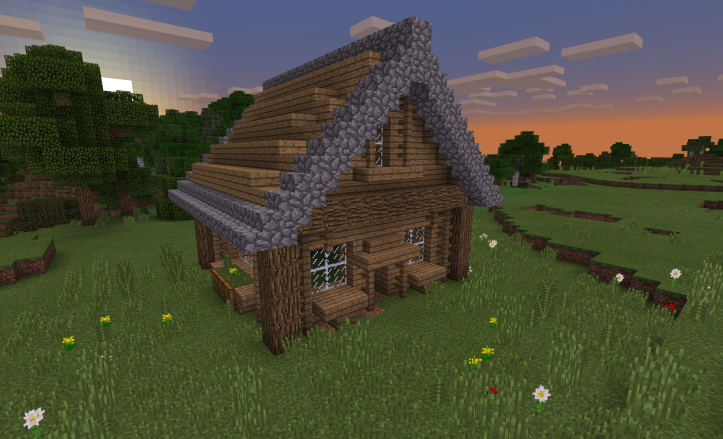
Dedicated Improvement and Reflection Time (DIRT) cuts to the absolute core of learning. Teach them something, work out what could be done better, show them how to make it better. Yet when I give feedback to my students there is a real reluctance to revisit that work and improve it. “You want me to do it again? But I’ve already done it!”
The process of reflection and improvement modeled by AUSTIN’S BUTTERFLY grabbed me with its simplicity and effectiveness as soon as I saw it. I’ve used it for a long while now and it is brilliant. I show the video to every group I teach at the start of the year to model how we are going to look at our learning in the year to come. But I needed a reminder that was permanently available as a reference point for my learners. It needed to use something they could relate to, something they were familiar with, something they do themselves on a regular basis. The build design process in Minecraft was perfect, so I designed this display. It currently resides in full 1.5m x 3m glory on the largest display board I have available in my classroom. So how does it work?
The Draft

Every piece of writing starts life as an idea and often students are so consumed with getting the necessary down on paper they that they overlook the trimmings. A bit like a first shelter in Minecraft. It gets the job done.
It’s not pretty, but it serves a purpose. It’s a good foundation on which something great can be created. When my students see this image they start the critique process naturally. “That roof is rubbish. The walls are boring. That roof sucks”. They organically commence the Reflection and Improvement process with little input from me. So “what can be improved and how would you make it better?” Enter the principle of critique.
They have to be KIND, SPECIFIC and HELPFUL. So instead of “That roof sucks” they are asked “What’s good about it”. “Well it uses stairs instead of blocks. It is a different material to the walls. The materials are easily gathered from the surrounding area”. They have been both KIND and SPECIFIC in this process. When applied to a paragraph of writing and the same feedback principles are applied, the results speak for themselves. “I like your simile. You’ve used some interesting words. The detail you have focused on is really interesting.”
Critique
So now for the HELPFUL. “What SPECIFIC thing could be improved with this house?” “Could you add some height to the roof? Would some supports help the walls look more realistic? Can you make the windows look less like a part of the wall?” The crossover to the writing process is a small but crucial step into the redrafting phase. In my classroom I use a “Carousel Critique” approach where students circulate round the room visiting at least 3 other students work and leave them feedback. By the time they return to their own work they have at least 3 KIND comments and 3 SPECIFIC things they can work on to improve their writing.
Now for the Redraft

Acting on the SPECIFIC and HELPFUL feedback students redraft their work. They make the improvements that have been suggested by their peers as it is often seen as less judgemental and constructive. It is often done in a different coloured pen, in and amongst the original draft allowing them to insert phrases, improve word choices and rephrase things to add clarity or flare. They are often frustrated by this and want to jump to rewrite the whole thing so we repeat the critique process on their own work first. By this time they have read 3 other drafts and have many ideas to draw from. We focus on the details, the flare, the specific nuggets of description that really bring a piece of writing to life.
The final draft?

The first house did the job. The third house did it with flare. My students even critique this stage and the process is cyclical. I rarely share level/grade specific criteria (controversial I know) but I have found that this restricts the process to students focussing on a very limited perspective and results in a “ceiling of aspirations”. Break away the ceiling and leave the feedback open-ended however and students are more willing to focus on pure improvement. Not just ticking off a thing to get the next grade but actual embedded improvement that really pushes for the absolute best.
The iterative process of DIRTy Feedback is at the absolute core of learning no matter what the subject, age or ability of your students. Give it a whirl. I’d love to hear your feedback from within your classroom. The core principals of being KIND, SPECIFIC and HELPFUL really do remove barriers and break through ceilings when it comes to improving student outcomes.
Very helpful! Thank you for the insight. I think this is a great way to move through creative block, or a complete stall in moving forward with their work. Awesome.
LikeLike